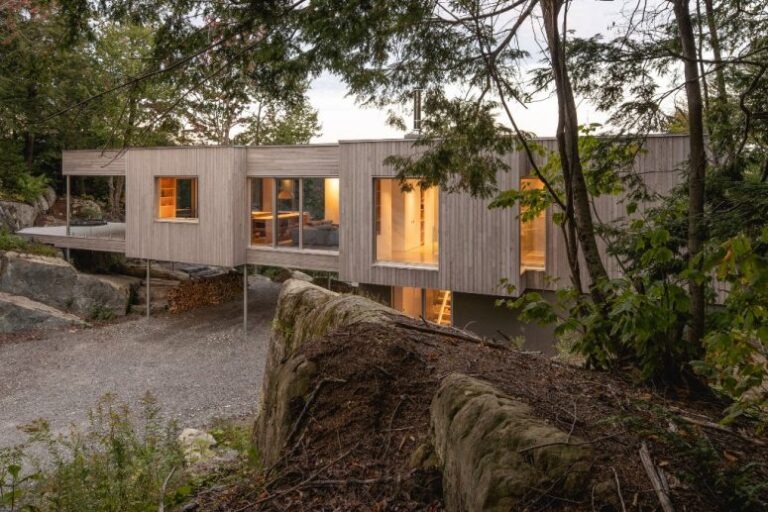What It’s Like to Live in a Naturally Occurring Retirement Community, or NORC
It’s impossible to miss the behemoth of a building I call home. Actually, it’s more a series of towers—an urban village, if you will—rather than a building. Built in 1934 across two New York City blocks, the village is surrounded by parks, playgrounds, and bike paths that are always bustling with resident activity, though it has lessened some during the pandemic. About 5,000 people share the space, but due to the layout of the complex with many units (including my own) facing a courtyard, it’s quiet as a whisper most days, save the errant crying baby or barking dog.
This place I live is known as a NORC. A NORC, or a naturally occurring retirement community, is a housing complex where the majority of the residents are seniors over the age of 60, though the community wasn’t built with their specific needs in mind. In short, many of my neighbors are elderly people. In New York, NORC buildings are byproducts of environments where safe, affordable housing is in high demand, and if one is lucky enough to find it, they hang on tightly for all the seasons of their lives. Many of the residents have lived in my NORC for decades, some for their entire lives.
NORCs are home to generations of families
Rikki Christopher, a stay-at-home-mom and co-owner of Krank, a gym in Brooklyn, has been living in my NORC since 1986, when she was born. (It might be more accurate to say I’m living in her NORC.)
Christopher’s grandmother moved into the building with her husband in the 1940s at the age of 18. She raised her family there. Then, Christopher’s mother and father moved into the apartment that she currently lives in, and raised their family there. Now, Christopher and her husband Danny also raise their two daughters in that same apartment, marking four generations of families in the same building, and three in the same apartment. That kind of longevity in one place is atypical to apartment living in New York, or really to anywhere. Rarely are three generations of family raised in the same home anymore. There is something quaint and small town-y about it. It makes me wonder if I could spend my whole life here, too.
“I love living here, I would never move,” Christopher says. Her favorite aspects of the building are ones we have in common. “I definitely love the community, the family vibe feeling, and just the energy. Sometimes it can be a little invasive because people know so much about you and they don’t know their boundaries, but it comes from a good place,” she says.
Since we are all used to seeing so much of each other in the courtyard, it almost feels as if everybody knows everybody. “There are certain days I just want to go home and I’m tired, but certain people I walk past want to have a 25 minute conversation with me. How is my daughter doing? When is she going to school? They’re kind of technically a stranger and they don’t understand they’re a stranger,” Christopher says. She likens it to “having 10 grandmothers.”
NORCs have stabilized rent and community resources
I landed in New York City in 2001 and moved every year for nearly a decade. It always happened that at the end of my lease, my landlord would hike the rent so high I wasn’t able to afford to stay anymore. In the NORC where I’ve lived since 2012, my (and all tenants’) monthly rent is stabilized, meaning that it increases at a fixed rate on a set schedule. Property management must get permission to raise rent over a certain percentage, and they typically skip years of raising it, taking into account the high number of the older tenants on fixed budgets for whom a rent hike could potentially spell homelessness.
The seniors in the building enjoy special services and amenities that New York City has allotted to them as residents of a NORC, including bus trips to local grocery stores, visiting nurses, hot meal delivery, games, activities, workout classes, and more. These things are especially important during the coronavirus pandemic, as many tenants are needing extra help.Sometimes I can’t help but feel a tinge of jealousy at how many resources are available to some of my neighbors, but it’s reassuring to know that if I stick around long enough, maybe those resources will be accessible to me, too.
C., who asked to remain anonymous for this story, lives in my NORC, and has for most of her life. She used to work at a large company nearby until it closed, and now, she spends her days visiting other elderly friends who also live in the building. She is a spirited woman in her 80s who takes advantage of many of the senior programs the NORC offers. They send people to visit seniors, take them on grocery runs, and serve multiple daily meals in a senior community room in the complex.
“Our building has a deal with a local college where they send nurses to visit us seniors and they get college credit,” she explains. She pretends to be irritated by it, but I think she enjoys the company. C. also appreciates the closeness to a major local hospital, which she has visited more times than I can count in the few years I’ve been her neighbor. When I would drop by to see C., it’d be hard to get a word in edgewise, and quick visits were next to impossible. Not that I mind—she’s fun to listen to. Now, due to the pandemic, however, we (and other high-risk folks in the building) mostly just talk on the phone. The elderly residents are being perhaps extra careful about having guests over. She always has a story for me about the way things used to be, for her, and for the building. “There used to be chairs in the mail room where you could sit and relax,” she says. “They took ‘em out, probably because too many people would sit their butts in them all day long, yapping and making too much noise.”
A NORC’s resources are especially useful when disaster strikes, for example, Hurricane Sandy which flooded the building severely, and the current pandemic. It’s hugely beneficial for elderly residents to share the building with younger tenants who can help them—and they often do. In the spirit of community service, and for zero college credit, I make myself available to elderly residents like C., and run errands for her and others whenever I can.
The property managers have recently modernized their communications with tenants—and just in time for coronavirus alerts. In addition to their printed signs hanging in the lobby, near the elevator, and on each floor in two languages, we regularly receive text messages and emails from management. And now, with COVID-19, we receive texts seemingly every day, reminding us to wash our hands and keep a safe distance from fellow residents, most of whom are at a higher risk for complications from coronavirus. We’re also reminded of the building’s new policies, such as allowing only two people in an elevator at a time, and that meals and masks are available for all residents.
Living in a NORC allows me to have community service built into my lifestyle, which, before living in my NORC, is something I always wished I had more time to do. Now as a busy mom of a young child, I am still strapped for free time. But thanks to where I live, opportunities to help are literally at my doorstep. In addition to the little things that I had grown accustomed to doing multiple times throughout the day, such as holding the elevator for slow moving neighbors, helping carry bags or packages upstairs, and stopping for lengthy chats in the courtyard, I am often asked to pick food or medicine up from the store for neighbors while I’m out, or help seniors navigate technology. Lately, I’ve been making sure to check on neighbors and friends with a bit more regularity. I sometimes do small requested errands around the home of my older neighbor when she’s been in the hospital. I have the keys to several of my neighbors’ apartments for this reason.
Securing a unit in a NORC is no walk in the park
Getting the chance to live in my NORC felt like winning a mystical lottery. It’s likely you’ve never heard of the process. Interested tenants place their name on the building’s wait list—when the list is open, that is. After that, names are selected at random through a computerized drawing to be eligible for residency. Prospective tenants are shown several units, and if they like one, leasing it is just like any other apartment building in New York. The only caveat is that our NORC has an income cap, meaning that residents’ salaries can not exceed a certain financial bracket. Once that is proven with tax forms and other documents, the keys are handed over and the resident can move in.
Getting into my NORC took me about a year, door to door, to complete. It was one of the best time investments of my life, because living in my NORC has changed my life.
In addition to affordable rent, the quiet, peaceful way of life hidden among the city’s seemingly increased sirens is something I love about it. My NORC has also given me a close-knit community of friends and neighbors that I’ve never experienced at any of my other New York apartments. Perhaps one reason is that I’ve never lived in a complex quite as large as the place I now call home. Maybe it’s because seniors make great neighbors. They are in bed early, they believe in pleasantries and old-fashioned notions, delight in phone calls and giving random gifts, such as baked goods, a bottle of wine, or an unexpected toy for my son’s birthday. They have cute puppies and they always smile, say hello, and have a piece of elderly wisdom just when you need it.
The only downside of living in a NORC is that the goodbyes come too often. Though we all know how life works—even at a time when losses from coronavirus are becoming disturbingly familiar—they still always feel unexpected.





Leave a comment